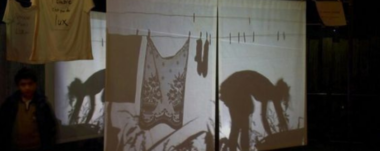Ethical Challenges of Artificial Intelligence and Deepfakes: A Threat to Privacy and Individual Rights

Over the digital age, the increasing pervasiveness of Artificial Intelligence (AI) and Deepfakes raises serious concerns about the violation of human rights and privacy. These technologies, while promising in many respects, pose a growing threat to personal integrity and fundamental democratic values.

An international survey on online harms conducted by the Centre for International Governance Innovation (CIGI) in 2020 in 18 countries with the participation of 18,149 people, revealed that 60% of respondents had experienced at least one of 13 forms of online harm. LGBTQ+ people reported the highest proportion of incidents experienced. In addition, women accounted for a slightly higher proportion than men, although they were more likely to report a more severe impact of these incidents compared to men. Among the forms of online harm asked about, non-consensual use of intimate images was the incident most considered harmful, especially women (82.8% vs. 71.2% of men).
November 22, 2023 Por Nidia Hidalgo
Let’s take a close look at how AI and Deepfakes are challenging ethics and privacy from three key perspectives:
Discrimination and Lack of Transparency
AI, used in a variety of contexts from employee selection to government decision-making, can perpetuate bias and unintentional discrimination. Due to lack of transparency in their operation, opaque algorithms can lead to unfair decisions and violations of basic human rights, such as equal opportunity and non-discrimination. Besides, the massive collection of personal data by AI systems raises serious concerns about privacy and individual autonomy.
Manipulation of Information and Identity



One particularly worrisome application of AI, Deepfakes have the potential to manipulate information and people’s identities in dangerous ways. By enabling the creation of highly realistic fake content, Deepfakes undermine trust in the veracity of the media and can be used to spread disinformation, damage the reputation of individuals and companies, and even influence democratic processes, such as elections. This manipulation of information compromises personal integrity and the ability of individuals to control their own narrative.
For example: Imagine Mary, a young college student who, like many other young people her age, shares photos and videos on her social networks to stay connected with friends and family. One day, Mary discovers to her horror that her face has been superimposed on a pornographic video without her consent. This video, created using artificial intelligence technology known as deepfake, shows Mary engaging in sexual acts that never happened. She feels violated, humiliated and completely powerless in the face of the dissemination of this content that attacks her integrity and dignity. Mary is not the only victim of this form of digital violence. Around the world, thousands of women and LGBTQ+ people are subjected to non-consensual pornography generated by AI algorithms. This practice, in addition to being a serious human rights violation, has devastating consequences for the victims. Many experience mental health problems such as anxiety, depression and even attempts at self-harm due to the trauma and shame caused by the dissemination of this material.
Although some countries have begun to address this problem by implementing regulations, as is the case in China, where regulations have been established to control the harmful use of deepfakes, in places like Chile the situation is still worrying. The lack of specific legislation leaves victims unprotected and limits the legal actions they can take to defend their rights.
Risks to Autonomy and Freedom
The proliferation of AI and Deepfakes also poses significant risks to individual autonomy and freedom. Such technologies’ ability to collect, analyze and manipulate personal data can lead to mass surveillance and undue control by governments and corporations. This undermines fundamental rights to privacy and freedom of expression, creating an environment in which individuals feel constantly monitored and manipulated.
Sensorial Sunsets
Violation of Rights and Privacy
Navigate articles




